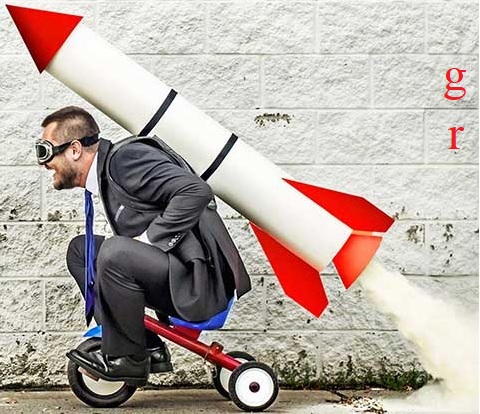This question always comes to mind whenever I see people jogging along sidewalks, and wonder. Sidewalks are generally concrete or cement or something, which is definitely harder than dirt, so…
All the people saying “yes” are incorrect. Running on pavement and running on trails exert different strains on the body, but not less. The tendency in road runners is to end up with tibial stress fractures, and in trail runners it is metatarsal stress fractures, but the injury rates are similar. Trail running requires stronger stabilizer muscles (primarily gluteus medius) to maintain knee health in the long term, but this is a problem for both as well.
Use good shoes, strength train your gluteus medius and calves, do most of your miles at an easy pace, and you’ll be running for decades, regardless of your chosen surface. You might even change it up and do both!
(My credentials are that i am an ultramarathoner and have run half a dozen races between 26.2 and 50 miles, on pavement and trail, and i have been coached by a professional ultra runner for several seasons.)
Thanks for the insight!
Use good shoes […]
This is such a tricky part of it all, given different gaits/fits/feet though, isn’t it? That’s been my experience anyway.
The strongest indicator that shoes will work for you, according to the research is… Do they feel good? I’d suggest going to a running store and trying on different brands and jogging around the store. Once you find a comfy pair, you probably chose well.
This guy exerts
Yes it’s absolute shit for your body. There is good reason why dedicated running tracks use a rubber like substance. Running in the woods is also a good alternative. Just not the rock hard surface of urban infrastructure.
Those are mostly for sprinters and short distance runners as they are higher impact and use running cleats with less cushion then softer distance running shoes. They’re also more likely to fall in events like hurdles and it’s better to land on that then on concrete. Most of the shock that could be absorbed by those tracks could also be absorbed by good running shoes. Most events above a mile take place on the streets.
There was a mini scandal at the Atlanta Olympics because they made the track surface very hard, to suit sprinters and long-jumpers (in the hope of new records, in sports where the US is strong) and it meant that some of the runners who usually do the 5k and the 10k (track) struggled to compete in both events. (The sprinters, of course, were not covering enough distance to care.)
I managed to track down a decent reference for it, which also addresses your question in some detail: The Hard and Soft of It
The Atlanta Olympic Track was built as hard and fast as rules would allow. I know because I circled the thing 49 times in the 1996 Trials before I dropped out of the 10,000-meter finals with one lap to go. Those Games weren’t for me, and the concrete-hard track aggravated a case of plantar fasciitis that kept me from running more than a block for about a month after that.
On the surface, others had better luck: Michael Johnson and his golden slippers set world records later that summer in the 200 and 400; the former endures nearly a decade later. However, after Haile Gebrselassie won the 10,000 meters, he withdrew from the 5,000 meters, complaining of severe blisters on the bottom of his feet caused in part by the hard track.
But comparing trail to road is a bit more complicated. Trails can be pretty hard and also, not as smooth and even as (some) roads, and asphalt is different from concrete. The linked article has some good discussion of different surfaces.
Yes but you don’t really start to notice the shock absorption difference and the joint pain until you’re in your thirties or forties.
Hey! Some of us have had shitty knees since puberty!
Yeah, one day one of my knees cracked weird as a young lad and it was never the same
deleted by creator
Flat feet tend to make knees hurt much earlier, believe me
Source: guess
I’m close to 50, been running for decades, and still pull over 2k miles annually. Almost all that on asphalt. Haven’t experienced any joint problems yet. I credit three things for that. First, modern running shoes are designed to soften the impact, and recently they have gotten ridiculously soft. The extreme cases give you 50mm (about 2 inches) of soft foam under your feet, but even more normal running shoes have advanced foam and bouncy elements in the outsole to soften the impact. Second, proper running form is not rocket science, and most people fall into a decent running form naturally. This form is the most gentle on the joints. And finally, if you are serious enough about running to go the distance where hard surfaces could be a problem, you are already likely to supplement your running with strength training, which further helps to protect your joints.
I’m an athlete and a biomechanics student who studies this sort of thing. Technically, if you do the physics, yes, pavement is harder than dirt. Will your body actually notice that difference given the forces that you experience from an easy run in modern shoes? Not likely. For a few hours a day, day in and day out over decades, then yes you will. But if you run a few miles once or twice a week, no, you probably won’t see a huge difference. (And most trails frequented by runners are packed dirt that is not much softer than pavement. Getting onto shift and squishy loam tails isn’t feasible for everyone.)
I used to get shin splints so now I only jog on jello
Lucky you, the only place I can run is on the moon.
deleted by creator
Martin Luther Ting?
Yes. I ran on asfalt and my shins started to hurt a lot. Friend’s an athlete and told me why it is. Started running on gravel and was fine.
I guess it also depends on how hard your dirt is.
Just jog on the beach with no shoes so you get those cool spread out toes
Beach jogging is actually pretty bad in the long term, as one leg is always going to be uphill compared to the other. Leads to injury. Same thing happens if you run on the side of a crowned road instead of on a flat sidewalk
Yep. Best you can do is run as far down the beach as you want with your right leg low and your left leg high, then turn around and run back so your left leg will be low and your right leg will be high. That evens it out.
Running in the sand is an invigorating challenge for muscles and balance and proprioception.
Running in the packed freshly wet sand makes it a little easier and firmer.
It’s amazingly good for the muscles in your feet and legs.
this is somewhat resolved by turning around and running the other way; but, sand is bad in other ways, too. (especially barefoot. yikes.)
Your method has the added benefit of being back at your car when the jog is over.
Or for a little extra challenge, run down the crown of the road to even out the lateral incline of the road.
Fair warning, this may lead to other injuries.
Is this how one joins the merfolk?
Hah I’m not sure about that but I know about the toes b cause I had a teacher who grew up along the beach and played soccer barefoot a lot and now has super spread out toes and is proud of them
That’s actually how our feet are supposed to be. Modern shoes have changed out foot structure as we age.
Yes.
Yes, this should be true.
Not a medical person, just common sense.
Definitely. Decomposed granite (that orange gravelly stuff) or dirt is much better for your joints and shins than running on cement.
I think the influence of your weight, technique and muscles is much more prominent.
I’m seeing that this matters for running but how about walking?
Walking is much lower impact. IMO you should be fine.
What about sprinting on all fours? I think Shia Labeouf is tailing me and I’m considering finding a sidewalk if it will ruin his joints.
Actual, cannibal, Shia LaBeouf?
deleted by creator











